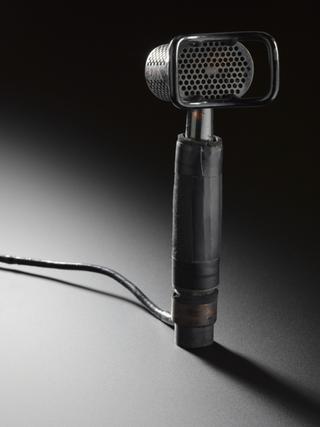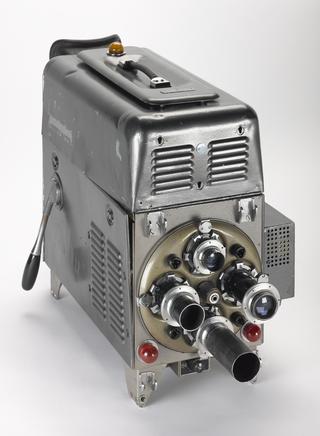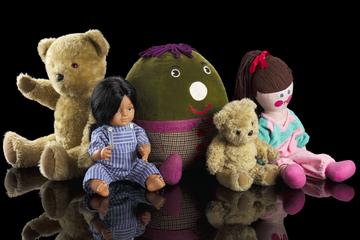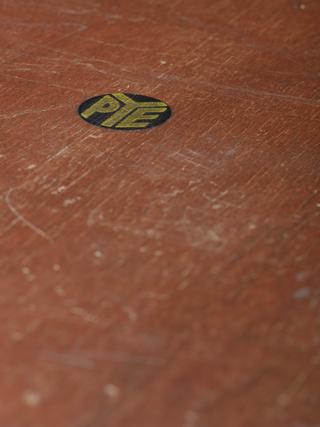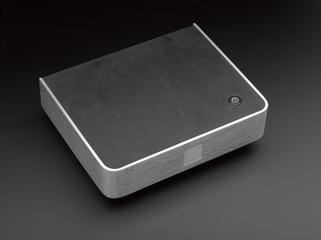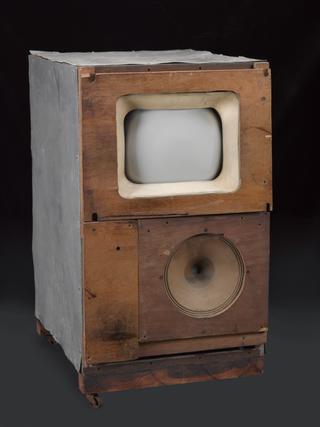
BBC (Zenith-GE) Stereo FM Receiver and Speakers
- Made:
- 1962 in United Kingdom
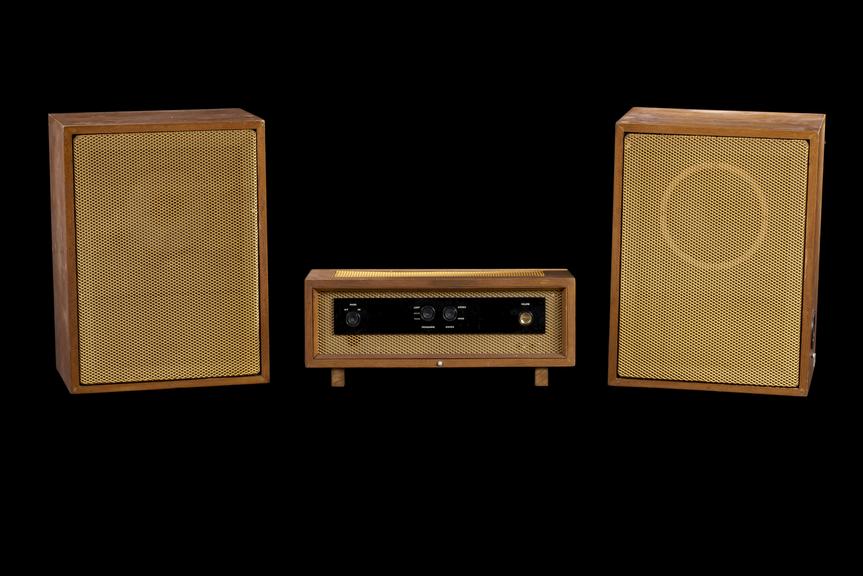
BBC-designed Zenith-GE stereo FM receiver and speakers, 1962. Comprising: Zenith-GE Stereo System Receiver 5; Zenith-GE Stereo System LS2A; Zenith-GE Stereo System LS2B.
The BBC Research Department performed tests on proposals for broadcasting in stereo for the European Broadcasting Union and published their report ‘Multiplex Systems for Stereophonic Broadcasting’ in 1962. Dedicated equipment was constructed by BBC for the trials, this unit was likely used in demonstrations to executives of the chosen Zenith-GE stereo technology. The unit uses standard technical hardware in a newly constructed wooden case.
The Zenith-GE system uses multiplexing whereby the multiple stereo channels are combined into a single transmission. At the receiving end this single transmission can be translated as stereo sound or read to produce a monoaural signal used by existing equipment. The system was developed in the United States and approved by FCC (Federal Communications Commission) in 1961. It was recommended by the European Broadcasting Union the following year and became the worldwide stereo standard.
On the 28 August 1962 the BBC began regular experimental radio broadcasts in Zenith-GE stereo for London and the South-East. Initially used for classical music on the Third Programme, Radios 1, 2 and 4 went stereo in a special Stereo Week in 1973.
Details
- Category:
- Television
- Collection:
- BBC Heritage Collection
- Object Number:
- 2012-5118/152
- Materials:
- wood (unidentified)
- Measurements:
-
overall: 730 mm x 380 mm x 530 mm, 42 kg
- type:
- radio receiver
